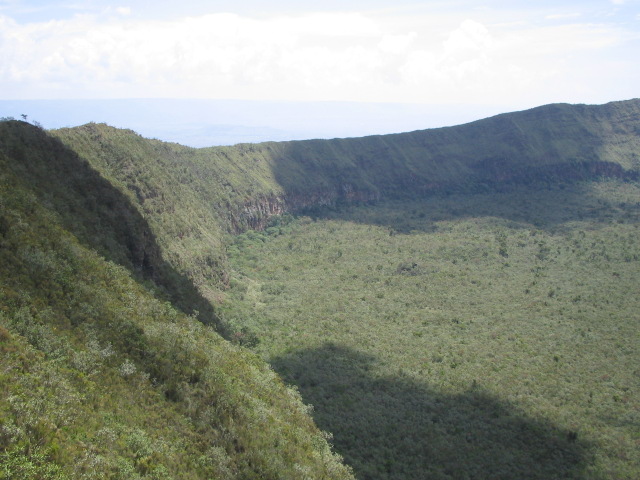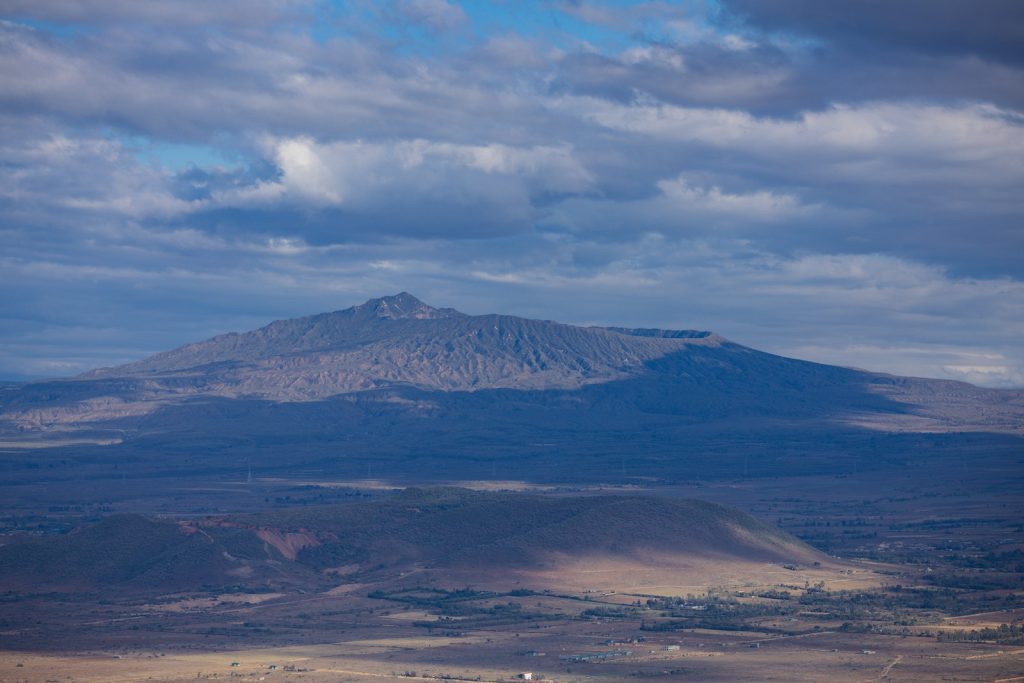Nestled in the heart of the Great Rift Valley, Mt. Longonot is a geological marvel that has captured the imaginations of hikers and nature enthusiasts from around the world. Its name, “Longonot,” is derived from the Maasai word “Oloonong’ot,” which aptly translates to “Mountain of Many Spurts of Steam.”
This moniker harkens back to a time when this dormant volcano was alive with geothermal activity, spewing forth clouds of steam and lava.
The Beauty of Mt. Longonot
Nestled in the heart of Kenya’s Great Rift Valley, Mt. Longonot is a natural masterpiece that has captivated the hearts of adventurers, nature lovers, and geologists alike. Its beauty is awe-inspiring and has an almost mystical quality that beckons explorers from across the globe.
1.1 Location and Geological Significance:
Mt. Longonot stands as a sentinel, rising 2,776 meters (9,108 feet) above sea level, and it’s a prominent feature of the Kenyan landscape. This dormant stratovolcano holds a significant place in the geological history of the region.
Its formation dates back thousands of years, and its distinct shape has been shaped by both volcanic eruptions and subsequent erosion. The result is a stunning mountain with a perfectly conical shape and a dramatic crater at its center.
1.2 The Crater:
At the heart of Mt. Longonot lies its most captivating feature—the crater. The crater is an incredible sight to behold, a vast, circular depression that extends almost 1.8 kilometers (1.1 miles) in diameter. Standing at the rim of the crater, you’ll be treated to breathtaking panoramic views of the surrounding landscape.
From this vantage point, the Kenyan savannah stretches out before you, and on a clear day, you can even glimpse the shimmering waters of Lake Naivasha in the distance.
1.3 The Surrounding Landscape:
Beyond the crater, the scenery around Mt. Longonot is equally enchanting. The mountain is set against a backdrop of rolling hills, acacia forests, and the mesmerizing Rift Valley floor. This blend of diverse landscapes creates a striking contrast and adds to the mountain’s overall allure.
1 Day Itinerary Hike Of Longonot From Nairobi
If you’re looking for a one-day hike to Mount Longonot from Nairobi, we can hook you up with a group to go climb the Longonot. Here’s an itinerary
– Meet u at a designated point in Nairobi
– 7:00 am: Leave Nairobi for Mount Longonot National Park
– 8:30 am: Start the hike up the mountain
– 10:30 am: Reach the Mount Longonot crater rim and go around the crater
– 12:30 pm: Have a picnic lunch at a scenic spot
– 1:30 pm: Descend the mountain
– 3:00 pm: Depart for Nairobi
The hike up Mount Longonot takes about 3-4 hours, depending on your fitness level. The trail is steep and rocky, so it’s important to wear sturdy hiking shoes and bring plenty of water and snacks.
The views from the top are spectacular, with sweeping vistas of Lake Naivasha and the Great Rift Valley. Some tour operators also offer transportation, park fees, and a guide as part of the package.
Use the form below to inquire from us regarding your interest in climbing Mt Longonot
Contact Us
Use the form below to contact us regarding your trip ideas. We shall get back to you within 12 hours
The Crater Rim
Reaching the crater rim of Mt. Longonot is a climactic moment in your hiking journey, offering breathtaking views and a sense of accomplishment that makes every step worthwhile.
The Ascent to the Crater Rim:
The path to the crater rim is a challenging one, marked by steep ascents and rugged terrain. As you make your way up, the anticipation grows with each step, and your effort is rewarded with glimpses of the astonishing scenery that awaits you.
Panoramic Views:
Standing at the crater rim, you’ll be treated to panoramic views that extend as far as the eye can see. To the east, the Great Rift Valley unfolds in all its glory, its vastness and geological complexity on full display.
To the west, the shimmering waters of Lake Naivasha glisten under the sun, creating a stunning contrast against the savannah and surrounding hills.
The Crater’s Depths:
Peer into the depths of the crater, and you’ll be met with a mesmerizing sight. The interior of the crater is lush with vegetation, including dense forests and unique plant species that have thrived in the volcanic soil. This green oasis provides a striking contrast to the barren, rocky exterior of the crater.
Geological Wonders:
The crater itself is a geological wonder, offering insights into the Earth’s processes and history. Take a moment to appreciate the forces that shaped Mt. Longonot over millennia, creating this dramatic landscape. It’s a living testament to the Earth’s ever-changing nature.
Tranquility and Contemplation:
The crater rim is also an ideal spot for reflection and contemplation. The stillness and tranquility of the place invite you to sit, soak in the surroundings, and connect with the natural world. It’s a moment to savor the achievement of reaching this point and to appreciate the beauty of our planet.
Photography and Memories:
Don’t forget to capture this remarkable moment with your camera or smartphone. The crater rim provides endless photo opportunities, from wide-angle shots of the landscape to close-ups of unique plants and rock formations.
These photos will serve as cherished mementos of your Mt. Longonot adventure.
A Sense of Accomplishment:
Standing on the crater rim, you’ll feel a profound sense of accomplishment. You’ve conquered the challenges of the hike, ascended to this incredible vantage point, and witnessed the natural beauty of Mt. Longonot in all its glory. It’s a moment to savor and remember for years to come.
As you take in the grandeur of the crater rim, you’ll realize that the journey to this point is more than just a physical feat; it’s a spiritual and emotional experience that connects you to the Earth and its wonders.
Mt. Longonot’s crater rim is a place of awe and inspiration, a place where the majesty of nature is on full display, and a place that beckons you to return again and again.
Packing the Essentials
Packing the right gear and essentials is paramount for a successful hike. Here’s a checklist of items you should consider bringing:
- Hiking boots: Sturdy, comfortable footwear with good ankle support.
- Weather-appropriate clothing: Dress in layers and be prepared for changing weather conditions.
- Backpack: A small, lightweight backpack to carry your essentials.
- Water and hydration: Carry enough water to stay hydrated throughout the hike.
- Snacks and meals: Pack energy-boosting snacks and a light meal for sustenance.
- Sun protection: Sunglasses, and a wide-brimmed hat to protect yourself from the sun.
- First-aid kit: Basic first-aid supplies for minor injuries.
- Camera and binoculars: Capture the stunning scenery and wildlife encounters.


